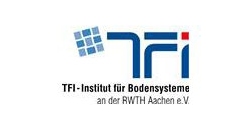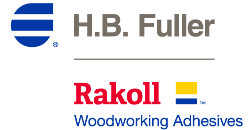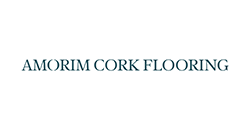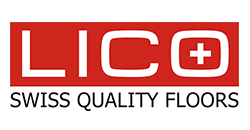MMFA researches temperature behaviour of various types of multi-layer flooring
Floor temperatures as hot as a Formula 1 race track in Abu Dhabi…!
(as of: 10/2016) Every craftsman knows that floating floors have to include some leeway e.g. for walls, pipe inlets and door frames. Installations which cover large areas must incorporate expansion joints – but can the sizing be left to chance using the proverbial “thumb width” as a guide, or should it be backed up by in-depth research and product development that focuses on known problems? The MMFA considers itself in charge of a systematic research in this field. That is why, together with the Wood Technology Institute in Dresden (IHD, www.ihd-dresden.de), the association has launched a joint project named “Temperature Resistance”. One aspect was to study dimensional changes caused by temperature fluctuations.
The MMFA Association, which is active throughout Europe, was founded in 2012 as a result of the global growth in the market for multilayer, modular, floating floors with thermoplastic wear and core layers (also known as LVT). The initials MMFA stand for the “Multilayer Modular Flooring Association”, which comprises just under 50 companies – manufacturers, importers and suppliers. Their aims include developing quality requirements that are generally binding and based on thorough research, thus guaranteeing installers and users the peace of mind that these attractive floor coverings will last for many years to come.
There are different types of multilayer modular floor coverings: the wear layer generally consists of thermoplastics, as does a high proportion of the core material. The word thermoplastic says it all: under the influence of temperature fluctuation, this material can theoretically change shape by itself, so the leeway that is incorporated during installation allows for these dimensional changes.
But exactly how do temperature fluctuations cause a floor to “grow” or “shrink” regardless of its design, and how great are the differences?
The usual temperature range of underfloor heating is relatively insignificant in this respect, because the classic scenario of solar radiation through a large south-facing window on a summer’s day can easily lead to temperatures hotter than the asphalt on a Formula 1 race track in Abu Dhabi or in tropical Malaysia.

Possible contractions of these floor coverings resulting in permanent change after an exposure to thermal stress have been regulated in EN ISO 23999; however, practical behaviour in the form of temporary expansions during exposure to thermal stress has not yet been taken into account by this standard.
Now systematic studies across a range of temperatures form the basis for a proposal on how to determine dimensional changes during an exposure to heat. This proposal was verified by a round-robin testing procedure.
Set-up, temperature cycle and measurement times determine significance
MMF flooring samples in three different compositions were selected for testing in six different laboratories:
(1) 5 mm thick elements with glass fibre reinforcement in the vinyl core
(2) 4 mm thick elements with vinyl core without glass fibre reinforcement
(3) 4.5 mm thick elements with a non-vinyl thermoplastic core
The sample pieces were cut at the institute in charge, IHD, with side measurements of 160 x 160 mm, and each laboratory received three samples of each of the three types.
During the testing, each sample was subjected to two different test cycles in six stages.
One cycle reached a maximum of 60°C, the other reached as high as 80°C.
Each 72-hour test cycle (whether 60°C or 80°C) included the following steps:
(1) Test pieces acclimatised for a minimum of 24 hours at 23°C and 50% relative humidity
(2) Initial measurements for each sample measured and recorded in the X and Y dimension
(3) Samples mounted for six hours on defined steel plates at maximum temperature for the respective cycle (60°C or 80°C), measurement taken after six hours
(4) Samples mounted for 18 hours at 23°C and 50% relative humidity on the same steel plate, measurement taken after 18 hours
(5) Samples mounted for a further six hours at the maximum temperature for the respective cycle (60°C or 80°C), measurement taken after six hours
(6) Samples mounted for a final 18 hours at 23°C and 50% relative humidity and dimensions measured after 18 hours.
Five measurement values were therefore taken per cycle for the X and Y dimension.
Digital measuring devices used were: in one laboratory, a frame with dial gauge (see left); in the other five, a frame with caliper gauge (see right). Both types of device operated to a measuring accuracy of 0.01 mm.


Test results make limiting values feasible
For the three different material set-ups tested at a peak temperature of 60°C or 80°C, the round robin tests between the six laboratories involved produced significant data for dimensional changes.
Without going into more detail here, an initial observation from the sum of all measurements across the three types of material indicates that the results of the first and second heating and cooling part-cycles (steps 3/4 vs. 5/6) vary so little that it might be possible to consider single heating and cooling cycles and still produce reliable results, thereby shortening the testing process significantly and saving costs in practice.
The material composition type 2 (4 mm thick elements without glass fibre reinforcement) exhibits minor one-digit dimensional changes in the parts per thousand range when heated. The difference between the relative expansion in length and width is especially interesting. With regard to the changes after cooling, no significant differences between the three types of material were discernible. The mean value for the material composition 2 at the 80°C cycle makes it plausible to propose an upper limit of 1.5‰. for the dimensional change after cooling.
Summary
To summarise, the experts who ran the round robin tests drew the following conclusions:
- Unlike glued vinyl flooring, when elements are laid as a floating installation it is important to take a measurement after heating. This will provide important information on how the click connections are subject to stress. The same applies to the question of whether the relative expansion shows differences in length and width.
- The requirements for the tests should contain a time limit for measuring directly after heating.
- Reproducibility of the test results at 60°C is better than at 80°C, so consideration should still be given as to whether a 60°C test would suffice, especially as this temperature seems more relevant to practical applications.
- No systemic impact from using different measuring devices (dial gauge with frame vs. caliper gauge) could be detected.
- As both have an accuracy of 0.01mm, there appears to be nothing to contradict the use of the two types of device on test pieces laid as specified.
- Potential deviations in the test results could be caused by temperature fluctuations during measuring and variations in the time requirement before measurement. The same applies for the varying duration of the measuring process when the sample is in a heated state.
- Future testing regulations must therefore specify a maximum time period for measurement after the relevant exposure to temperature; the MMFA Working Group proposes an upper limit of one minute.
The result of these findings is the need to come to a decision on the requirements to be defined:
(1) Maximum values for X and Y expansion directly after the six-hour heating phase at 60°C
(2) Maximum values for X and Y contraction directly after the 24-hour cooling phase at surrounding climate conditions of 23°C and 50% relative humidity.
In addition to the two-dimensional changes in the X and Y direction, the outstanding question for further discussion is how to record convex or concave deformation in the Z direction which arises in a similar manner through the effects of temperature, since the interlaboratory testing described here only recorded two-dimensional changes.
The goal: reliability in everyday use

The view of the MMFA is that dimensional behaviour under the influence of temperature fluctuations plays a crucial role and therefore has to be researched and standardized, particularly in the case of modular floating installations with click connections. Expansion and contraction creates forces that will prove relevant for the MMFA “Locking Strength” project running in parallel with this.
Volker Kettler (MeisterWerke), MMFA vice president and convenor of the association’s Technical Working Group, states:“Through the right composition of flooring elements and the strength of the plank locking system, we must ensure that floating floors are as unaffected as ever possible by mechanical influences as well as temperature fluctuations.”
The research results of the round robin testing described here represent significant initial knowledge gained. Now the task of the MMFA is to develop independent test methods for floating floors of varying compositions with thermoplastic surfaces and the click connection system and embed these into international standards work – for the peace of mind and benefit of consumers, commercial and public sector users, planners, the trade and installers alike.































































